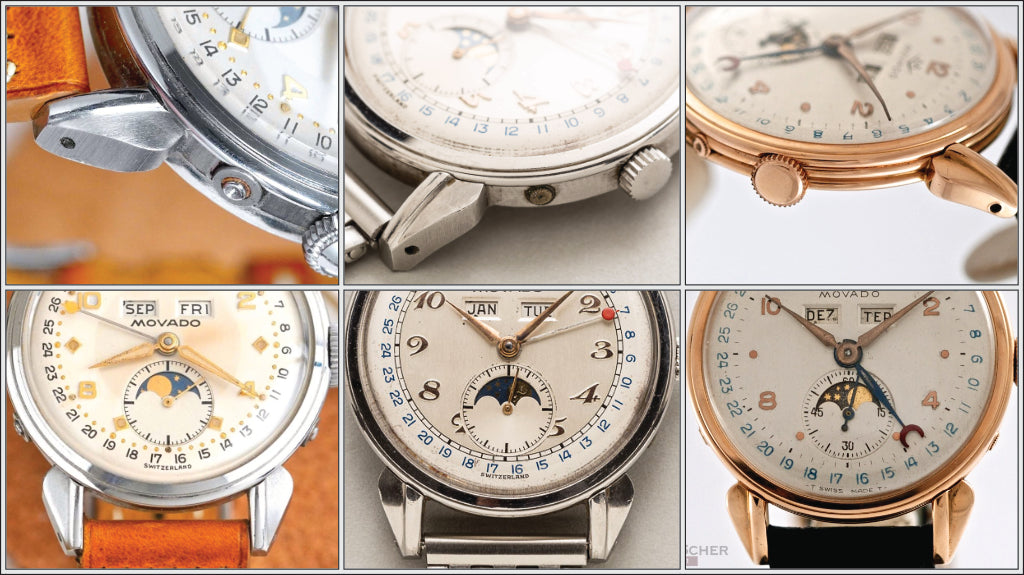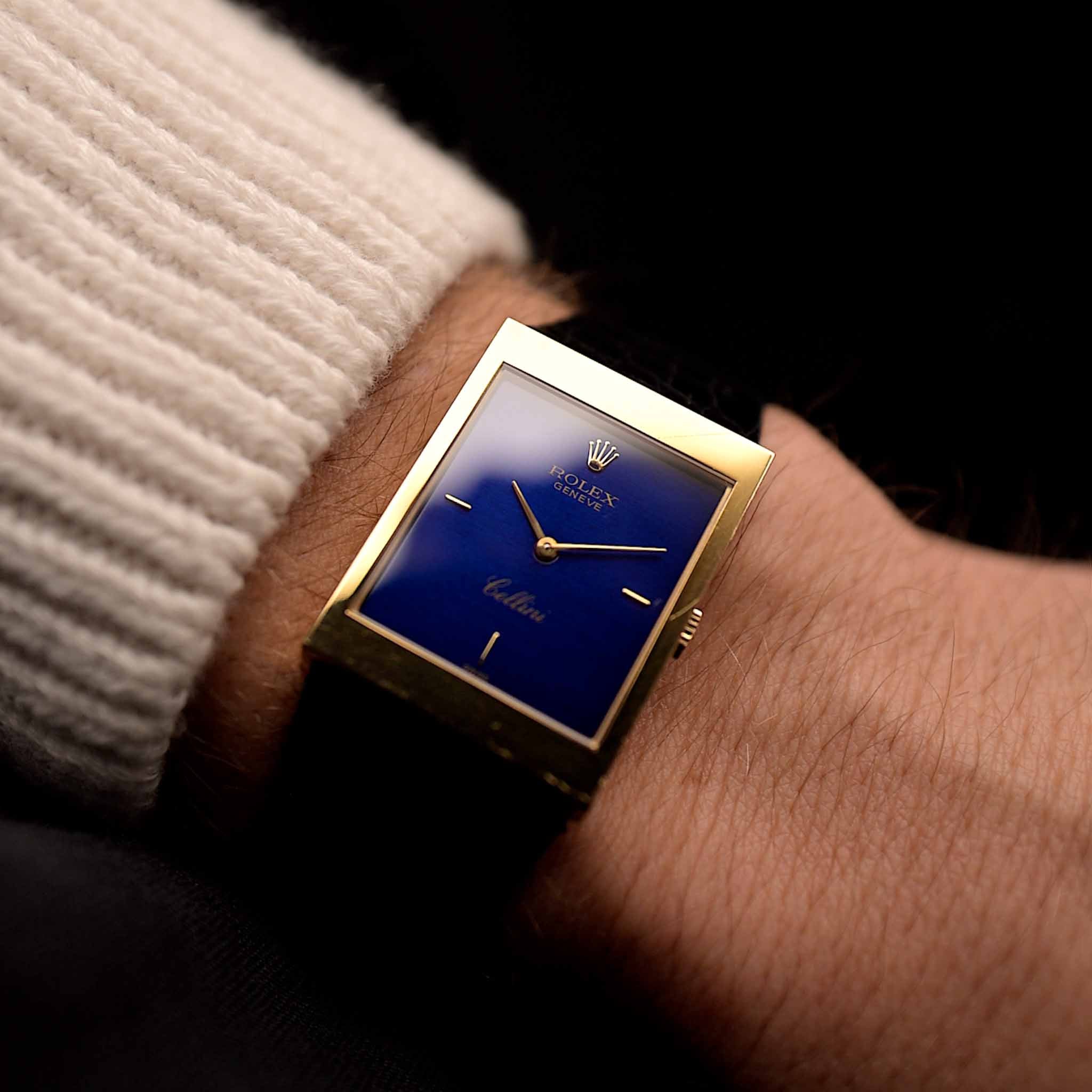What's a sports watch? I guess not many of us are buying a particular watch for sports, yet this (relatively loosely defined) horological genre is one of The modern archetypes. If you think about a modern release most of them will fall into the sports watch category or the other extreme - dress and design watches. Our modern taste simply lusts for those 100m water-resistance, shock absorbing case constructions and watches ready to withstand the elements... and that's even true for many highly complicated pieces. Well, how did we end up here? What's the story behind this modern standard?
February 21, 2024
The Rise of the Sports Watch - How Utility Became the New Normal

Marcus Siems @siemswatches
Collector, Author, Data Analyst
What's a sports watch? I guess not many of us are using or even buying a particular watch to do sports, yet this (relatively loosely defined*) horological genre is one of The modern archetypes. If you think about a modern release most of them will fall into the sports watch category or the other extreme - dress and design watches. Our modern taste simply lusts for those 100m water-resistance, shock absorbing case constructions and watches ready to withstand the elements... and that's even true for many highly complicated pieces.
Well, how did we end up here? What's the story behind this modern standard? Arguably that's a topic that's been on my mind for quite a while... So I decided to bring a little order into the different evolutions, the trajectory of sports watch* trends throughout the last Century... This time independent from specific models and brand.
 Figure 1. Summed Distribution of sports watches between 1940 - 2000. Data Courtesy of Chrono24**.
Figure 1. Summed Distribution of sports watches between 1940 - 2000. Data Courtesy of Chrono24**.
Between 1940 and 2000 we can observe a clear increase of the sports watch genre. About 20% of timepieces produced during the 1940s fit the bill of a sports watch*. That's the humble beginnings because a mere 30 years later we're looking at over 70% of produced pieces that serve a tool-esque purpose and are built with a certain sturdiness in mind. And this proportion stays stable well into the Neo-vintage era until the 2000s.
However, we also observe that not every era features the same sports-type watches. During the early years particularly chronographs and dress-casual watches are common. The first dive watches and "pure" sports watches appear markedly during the 1950s... So it seems that each era had its own interpretation of the "most common" sports watch.
 Figure 2. Distribution of the popularity of various sports watch genres between 1940 - 2000. Data Courtesy of Chrono24**.
Figure 2. Distribution of the popularity of various sports watch genres between 1940 - 2000. Data Courtesy of Chrono24**.
1940s & 50s - Recessed Crowns and Anti-Magnetic Chronos
The 1940s has been an epoch predominantly defined by World War II. The need for sturdy watches is everywhere, yet a sports watch in my definition is not a military watch. It rather is a design influenced by developments made for the battle field and adjacent applications.
 A 1939 Rolex ref. 3330 chronograph with a relatively common sight during that era: Antimagnetique (Anti-Magnetic) properties of the movement are highlighted on several chronograph dials of the time. Photo Courtesy of Phillips.
A 1939 Rolex ref. 3330 chronograph with a relatively common sight during that era: Antimagnetique (Anti-Magnetic) properties of the movement are highlighted on several chronograph dials of the time. Photo Courtesy of Phillips.
Watches during the 1930s and 1940s start to become more robust due to several developments in movement and case construction. First, the cases were purposefully built to better withstand both water and dust. A massive leap forward were for example Rolex's Oyster case (1926)[1], various Francois Borgel cases (1922)[2] and the Schmitz/Gallet clamshell cases (1936)[3]. These examples were invented to introduce water-resistance to watches. Other innovations included a separate case back lit to prevent the intrusion of dust and recessing the crown into the case flank to protect it from impact.
 An example of an IWC Hermet with recessed crown. The simple case construction can prevents the crown to be hit by strong lateral blows. Those were the first crown guards. Photo from Goldammer Archives.
An example of an IWC Hermet with recessed crown. The simple case construction can prevents the crown to be hit by strong lateral blows. Those were the first crown guards. Photo from Goldammer Archives.
Second, we can observe how calibers become more suitable for different environments as well. On the one hand this means using new metals for movement components to decrease their vulnerability for magnetic forces - and hence the dial text. On the other hand, movements became more shock resistant themselves. This includes the introduction of the incabloc (1933)[4] and several improvements to movement bridge layouts[5].
1950s - Rise of the Dive Watch
From the mid of the 1950s onwards we can see a clear trend for dive watches. Pivoting the popular perception of the genre came with the introduction of Rolex's Turnograph/Submariner (1953/54). Other players have been Blancpain's Fifty Fathoms (1955), Breitling's SuperOcean (1957) and the Omega Seamaster 300 (1957).
 A grail in dive watch evolution - A Rolex ref. 3346 Zerographe from 1937. The first rotational bezel dive watch. Photo Courtesy of Antiquorum.
A grail in dive watch evolution - A Rolex ref. 3346 Zerographe from 1937. The first rotational bezel dive watch. Photo Courtesy of Antiquorum.
Research, military and deep-water diving became more and more prominent and thus tools to accompany this activity made a big splash. And this utility-driven genre wouldn't really change until the 1980s - but we'll come to that a little later.
1960s & 70s - Space Age and Racing Chronographs
Probably one of the most important eras in the evolution of sports watches comes between the mid-60s to the mid-70s. The developments in the Chronograph sector are climactic but even more importantly these designs are so central because they very much shaped the way we perceive the sports watch up until this day.
 An early execution Omega Speedmaster Broad Arrow ref. CK 2915-2 (1957) ... the model that would go on to be known as "The watch that went to the moon"... Photo Courtesy of Phillips.
An early execution Omega Speedmaster Broad Arrow ref. CK 2915-2 (1957) ... the model that would go on to be known as "The watch that went to the moon"... Photo Courtesy of Phillips.
Yes, in 1969 there were three independent automatic chronograph movements introduced (Zenith, Seiko & Heuer et al.) but the legacy of that era lies within the narratives. The adventures that became associated with these mainly black-dialed steel chronographs. The daredevil attitude of race car drivers in legendary races made it to cover pages, imprinting their names on the dial, forging the nicknames for so many of these pieces.
1970s & 80s - Dress Casual Revival and the Luxury Steel Sports Watch
The 1970s saw an interesting genre-mix appearing. Two main factors played into this development. On the one hand, the imminent success of the tool-watches - both chronographs and divers. On the other hand, the international turmoil that hit the Swiss watch industry - it often referred to as "Quartz Crisis" but includes several other factors as Gold & Oil prices, currency instabilities and many more[6].
 The perfect blend between dressy and sporty... Cartier's Santos lineup embodies this new definition of a luxury watch. Photo from Goldammer Archive.
The perfect blend between dressy and sporty... Cartier's Santos lineup embodies this new definition of a luxury watch. Photo from Goldammer Archive.
As a result we can see a tremendous shift in Haute Horlogerie and a completely new definition of luxury. Indeed, watch design starts to jump rope with the boundary between tool- and dress watches. Steel is the new luxury product as its finishing is elevated to a new form of art. The most pivotal contribution to this very specific narrative comes of course in octagonal shape - Gerald Genta and Audemars Piguet's Royal Oak (1972). And several other iterations of this idea follow like the IWC Ingenieur (1976), Patek Philippe's Nautilus (1976) and Cartier's Santos (1978).
1980s - Skinny & Recreational Divers
What might best describe the evolution of the sports watch into its modern form is probably how the face of the dive watch changed. Beginning as the ultimate tool-watch it slowly but steadily moved away from its deep-dive designation to beach and pool recreation. Several design cues are affected but very prominent is the use of brighter colors, new materials and everyday wearability (i.e. size). One of the best examples of this trajectory is probably captured by Omega's Seamaster 300 lineup - I can highly recommend taking a closer look at Hodinkee's in-Depth guide to follow this trend[7].
 A blue execution of Tudor's Submariner... Dive Watch evolution in a nutshell. Photo from Goldammer Archive.
A blue execution of Tudor's Submariner... Dive Watch evolution in a nutshell. Photo from Goldammer Archive.
Concluding Remarks
After all these years and different iterations we're far from understanding this evolution in a short article of a couple hundred words. It takes some more in-depth work to fully appreciate the sports watch in its modern form and where it came from. However, I'd argue that every archetype of common or collectible modern sports watch has its roots in one of the five to six phases of vintage sports watches I've described just here.
All these vintage phenomena were built to last and to overcome hostile environments - let it be shock, G-power, magnetism, water, pressure, dust, you name it. And the elements were tamed. We're living in a world were so many of our everyday "activities" are experienced in front of a screen... Isn't it thus completely normal that to longs for the wrist presence encapsulating adventure? With no new frontiers to test beyond bandwidth and desk-diving we probably just wanna sense that tingle of the unforeseen again.
So it's not a question whether you want that sports-watch-feeling but rather which legacy you want to represent the most.
 Distinct example watches highlighting the design evolution of the sports watch over the last Century. Photos Courtesy of Christie's & the Goldammer Archive.
Distinct example watches highlighting the design evolution of the sports watch over the last Century. Photos Courtesy of Christie's & the Goldammer Archive.
* The (again... relatively loose) definition of a sports watch is any piece that's built to withstand certain environmental influences (water, dust, magnetism, etc.) and with a particular utility in mind exceeding pure time-telling (sport, diving, aeronautics, etc.).
** The data from Chrono24 has many advantages as it grants us insights into the vintage world with waste amounts of data (over 50,000 watches). But the data is also biased towards pieces that are still available from that specific time and do sell at a certain price point. This is important to keep in mind. However, I'd argue that at least the overall increase and the trajectory over time (apart from the absolute values) is relatively reliable and valid.
References
[1] The Complete History of the Rolex Oyster Case; Paul Altieri, Bob's Watches [Link]
[2] Francois Borgel and Louisa Borgel - inventors and makers of the first screw case back; David Boettcher, Vintage Watchstraps [Link]
[3] Brevet 189190 waterproof clamshell watch case; David Boettcher, Vintage Watchstraps [Link]
[4] Incabloc; Watch Wiki [Link]
[5] Pivotal Dress Watches - IWC Cal. 89; Marcus Siems, Goldammer Vintage Watches [Link]
[6] Debunking the Quartz Crisis; Stephen Foskett, Europastar [Link]
[7] Reference Points - The Omega Seamaster 300; Danny Milton, Hodinkee [Link]
All rights on text and graphics reserved to the Author.




























Leave a comment